By Jacob Hopkins - Mosaic Fellow
Jacob Hopkins, Archives & Collections Specialist, shares a recently digitized scrapbook that documents the experiences of African American sailors in Honolulu, Hawaii during the attack of Pearl Harbor. Access the James W. Caywood Scrapbook from home on the W&M Digital Archive.
We often talk about war on a macro scale: when did it happen, who participated, who lost, who won. While these details give the outline of armed conflict, they neglect the everyday consequences and personal impact of war. Individual stories—accounts of life lived, victories celebrated, losses shared, memories kept and forgotten—fill in a more complete historical narrative. Reframing our understanding of armed conflict through the lens of those who lived through it reminds us of what is most at stake during war: humanity, freedom, and individuality. The W&M Digital Archive lets you approach the history of war on a micro scale, accessing hundreds of digitized journals, diaries, and photographs kept by both soldiers and civilians. These collections, housed in the Special Collections Research Center, are accessible and persevered for posterity on the Digital Archive.
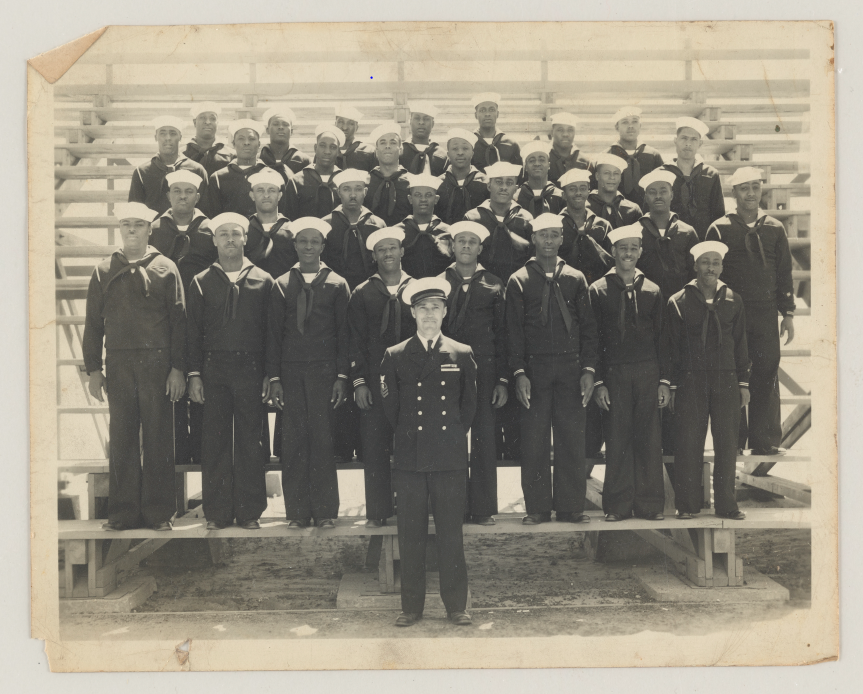 26th Special Naval Construction Battalion, Company A
26th Special Naval Construction Battalion, Company AOne recently digitized collection, the James W. Caywood Papers (MS 00277), tracks an eighteen-year-old’s service in the United States Navy during World War II. Caywood, an African American from Arkansas, was stationed in Hawaii in 1941 as a “Seabee,” a moniker for those who served in a “C B” or Construction Battalion. Although far away from the racially segregated everyday life of Arkansas, Caywood had to still operate within the explicit and implicit bounds of segregation while serving in the Navy. He served in the 26th Special Naval Construction Battalion, Company A, an all-black battalion led by a white lieutenant colonel. World War II was the last major U.S. armed conflict in which service members were separated on the basis of race.
Shortly after his arrival in Honolulu, Caywood witnessed the December 7, 1941 attack on Pearl Harbor by the Japanese Navy Air Service. Surreal black and white photographs of the disaster line the pages of his personal scrapbook, alongside news clippings from local Hawaiian papers. Caywood’s scrapbook presents multiple narratives: both the media’s portrayal of the attack and a lasting image of what he himself experienced.
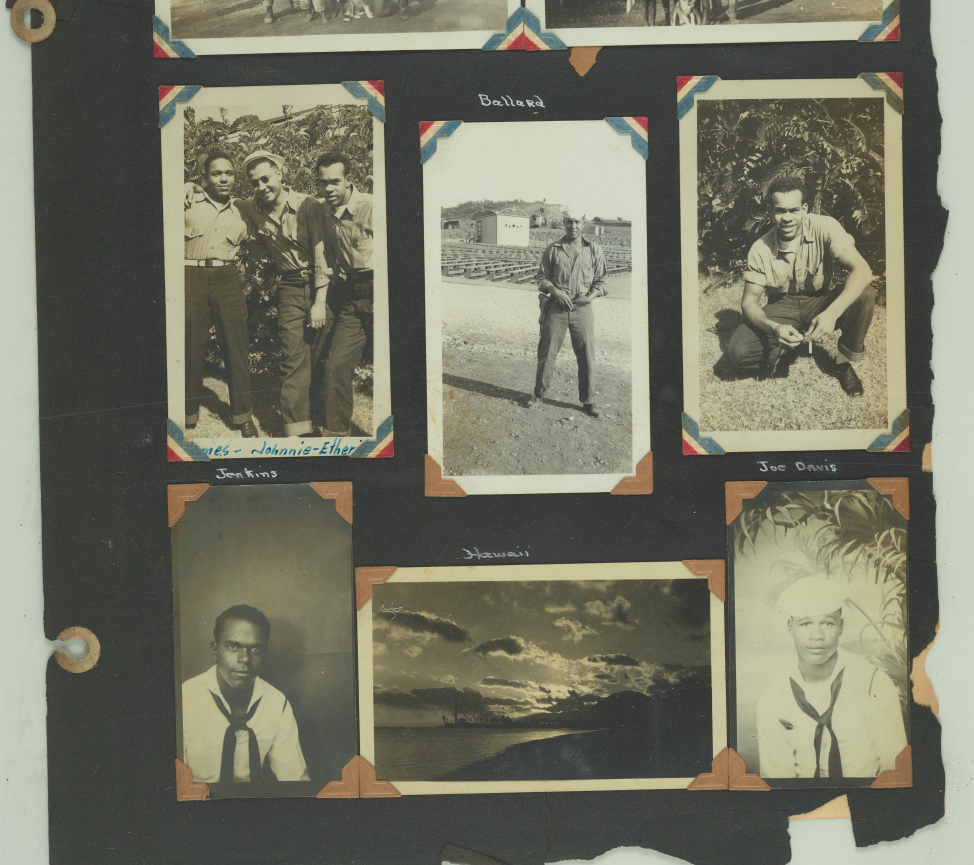 Photographs from Caywood's scrapbook depict his fellow Seabees and everyday life in Honolulu
Photographs from Caywood's scrapbook depict his fellow Seabees and everyday life in HonoluluCaywood dedicates a few pages to the attack on Pearl Harbor, but the remainder of his scrapbook compiles photographs of his fellow sailors, war ephemera, and news clippings and political cartoons—the vestiges of his daily life stationed in Honolulu.
An article written by Caywood in 1944 and sent to the editor of a newspaper is attached to the inside cover of his scrapbook. He asks the editor to prepare the article for the upcoming third “birthday” of the Navy Seabees—December 28, 1944—and writes, “It will give us and our families back home a great deal of satisfaction to know that the Seabees are being remembered.” Here, Caywood’s scrapbook reminds us that for those impacted by armed conflict, war is not just a tally of wins and losses, but a fight to hold onto what we value of humanity and everyday life—shared celebrations, unity, family, and birthdays included.
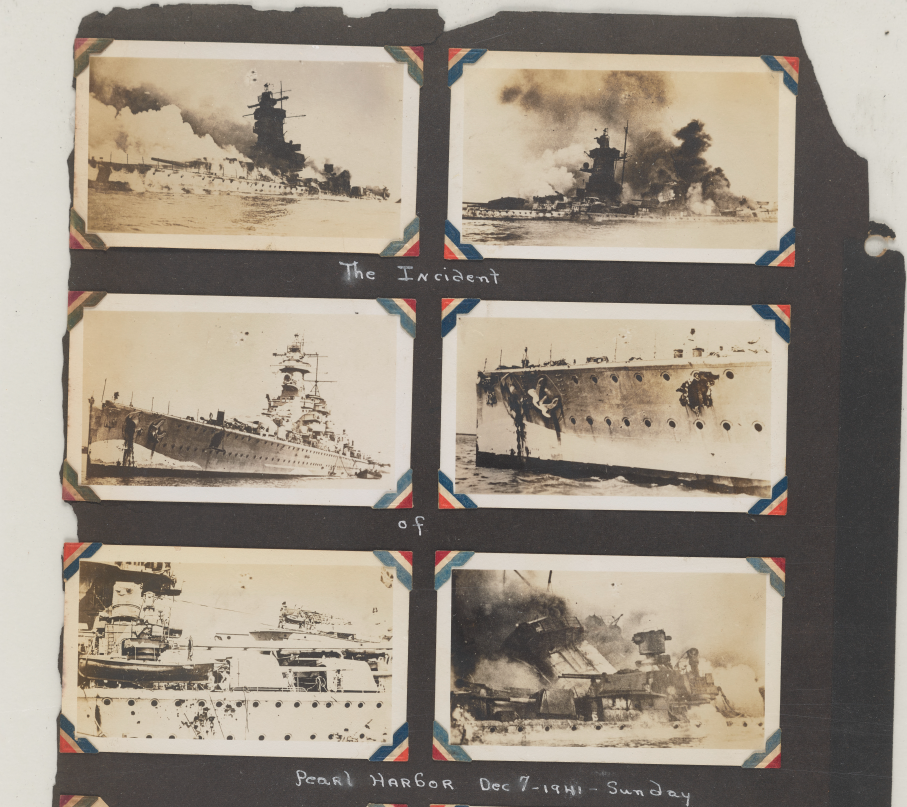 The attack on Pearl Harbor through the eyes of Caywood
The attack on Pearl Harbor through the eyes of Caywood
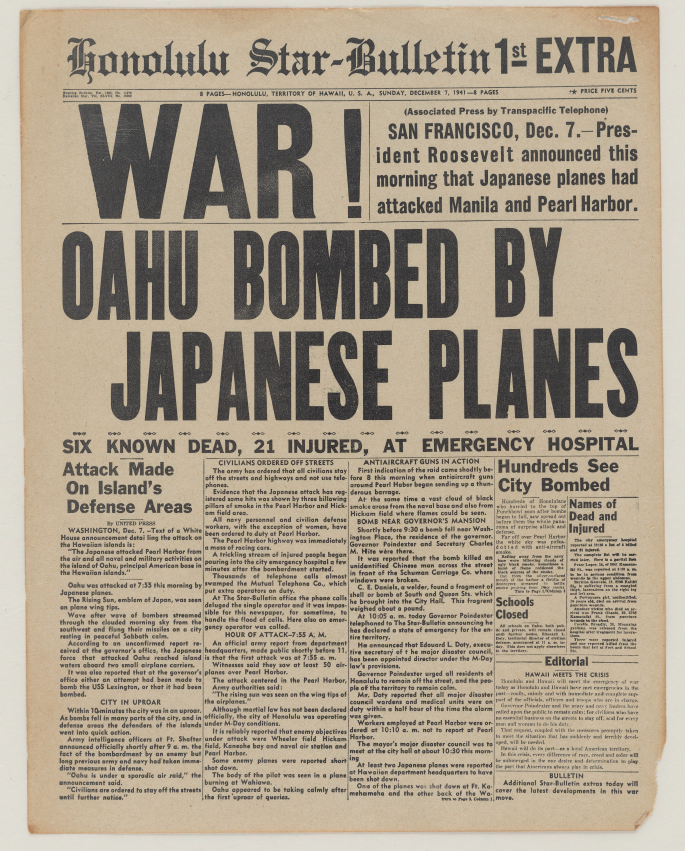 Caywood saved many newspaper clippings after the attack on Pearl Harbor, including this one from the Honolulu Star-Bulletin, December 7, 1941
Caywood saved many newspaper clippings after the attack on Pearl Harbor, including this one from the Honolulu Star-Bulletin, December 7, 1941
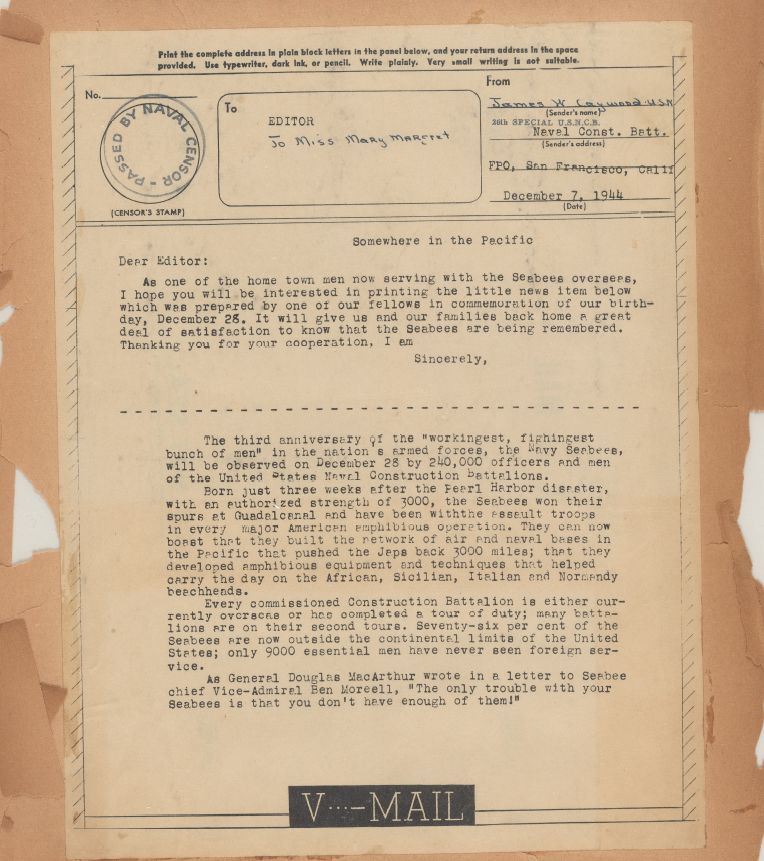 “It will give us and our families back home a great deal of satisfaction to know that the Seabees are being remembered.”
“It will give us and our families back home a great deal of satisfaction to know that the Seabees are being remembered.”
Resources and More to Explore:
Access James W. Caywood's fully digitized scrapbook on the W&M Digital Archive.
Explore the finding aid for the James W. Caywood Papers (MS 00277) on the SCRC's Manuscripts and Archives Collection Guides database.
Discover more popular digitized collections on the W&M Digital Archive.
Learn more about African American Seabees in World War II from the Naval History and Heritage Command.